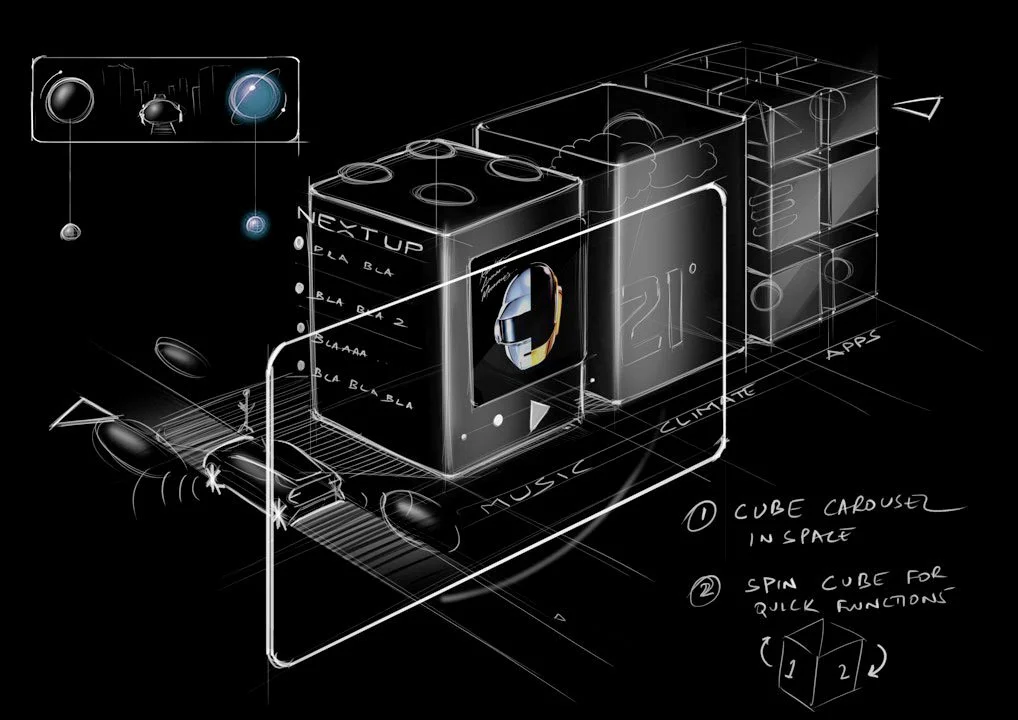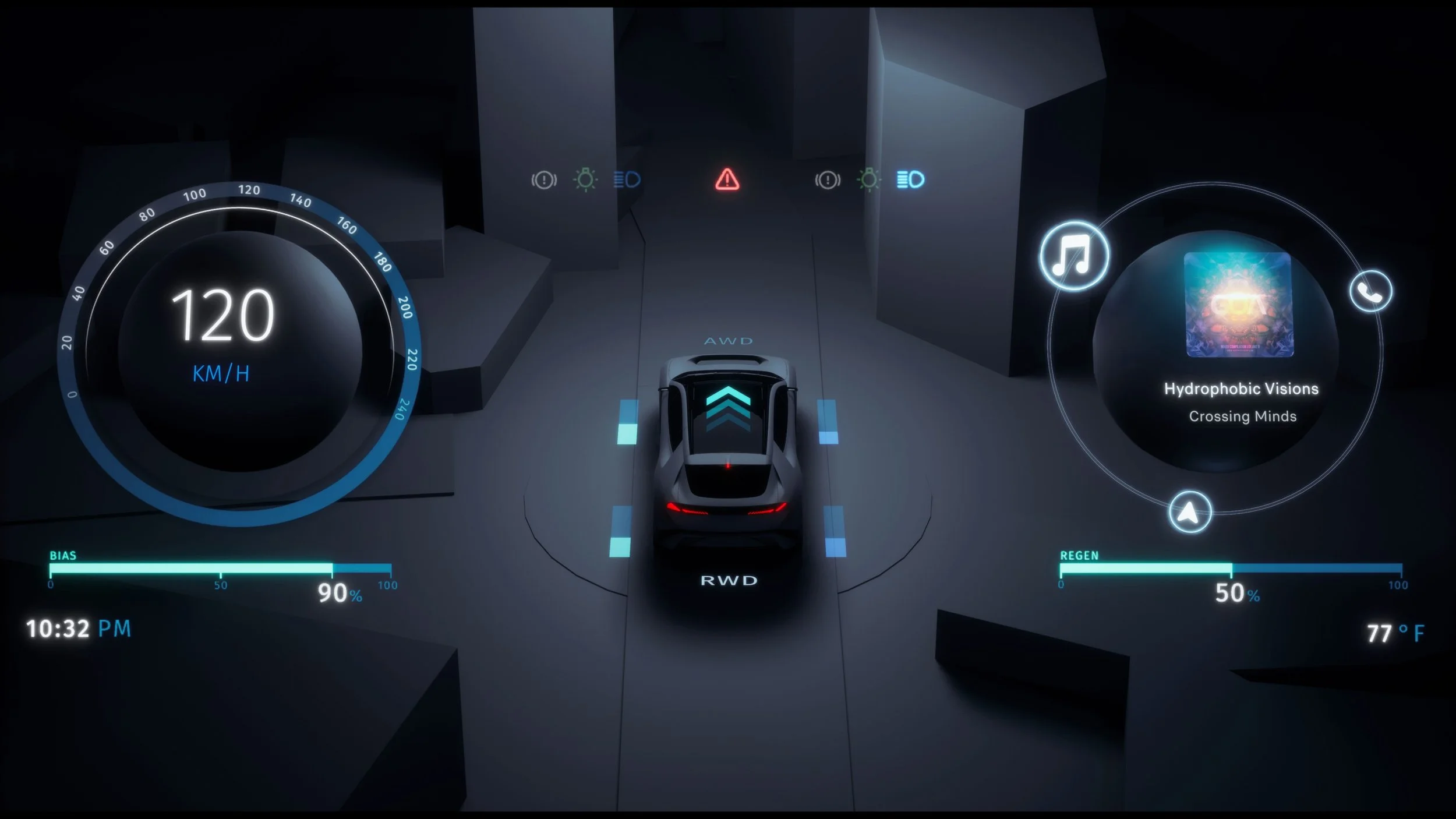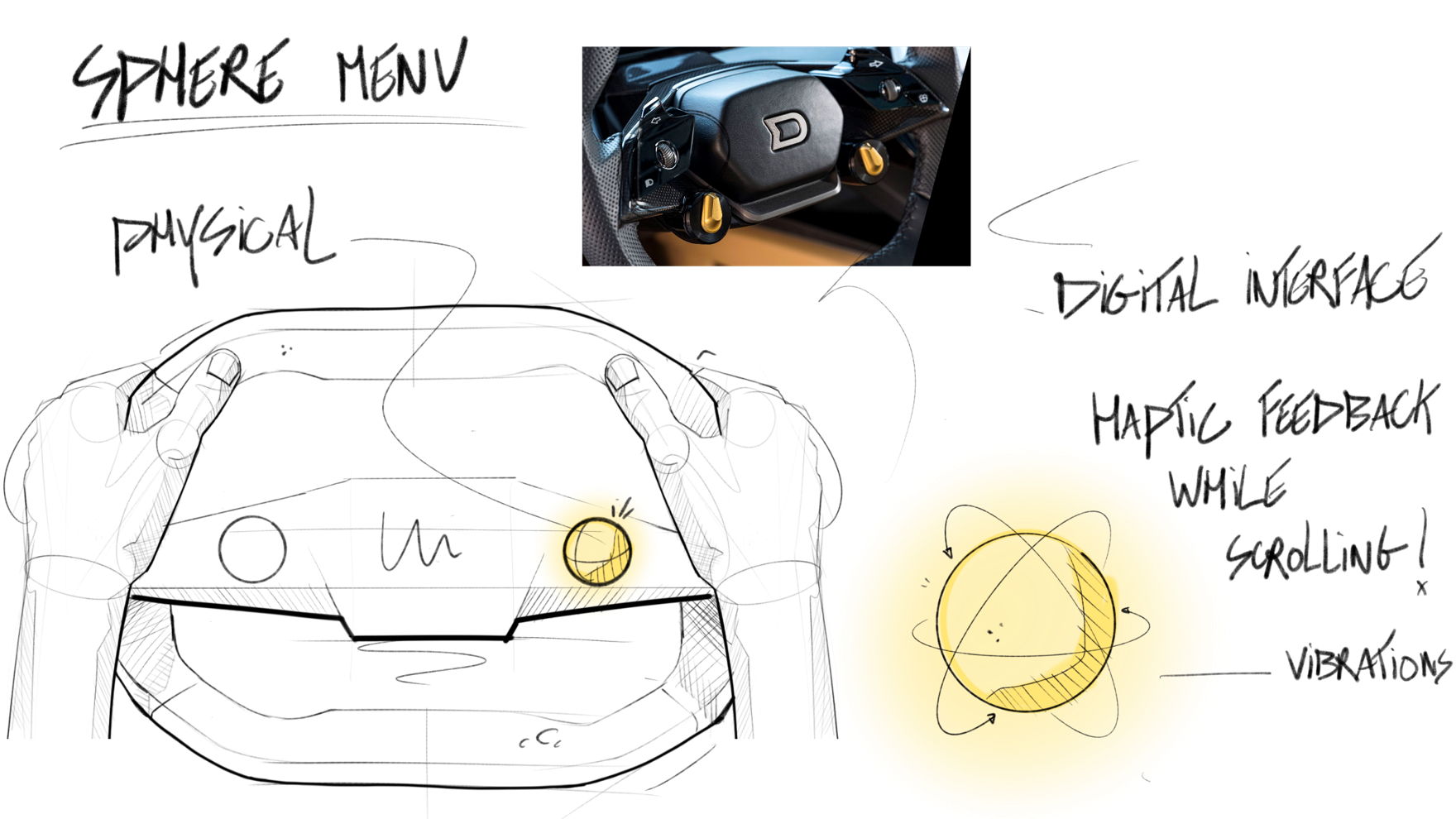
Interaction Design | 3D HMI research | 2023
Unleashing possibilities with transdisciplinary research in immersive 3D HMI.
Granstudio has conducted extensive research into the possibilities of 3D HMI Design. We have explored how the third dimension, along with the use of physics, movements, and interactive materials, can significantly enhance user engagement and ergonomics. Our research methodology is firmly rooted in the fusion of physical and digital interactions, leveraging cutting-edge mixed reality technologies.
The challenge
In an effort to explore the future of car HMI and leverage emerging technological trends, Granstudio conducted research on the potential role of 3D HMI technologies. The objective was to go beyond the capabilities of 3D HMI software in creating visually striking and game-like interfaces, and instead focus on how the utilization of the third dimension could genuinely enhance in-car experiences. Our main priority was improving the organization of information, creating more intuitive interactions, and seamlessly integrating them with the immersive 3D environment of the car.
Multidimensional Future Experience
We began by analyzing the various inputs that a car can generate through its abundant sensors and cameras. This approach of a "quantified car" opens up numerous opportunities to enhance the user experience inside the vehicle. By utilizing gaming engines that enable parametric designs, we can transform this information into interfaces that are transparent, functional, and spatial, thereby engaging multiple senses.
Humanized Interactions
The shapes of physical controllers on the steering wheel correspond to digital interfaces, enabling intuitive navigation through information. The combination of haptic feedback and visuals minimizes cognitive load during driving.
Our expertise in phygital design allowed us to quickly create simulations and prototypes for real-world testing, ensuring a seamless integration of physical and digital elements in the user experience.
Forces of Nature
In one of prototypes, we decided to harness the forces acting on our vehicle during the drive and integrate them with elements of the interface. This was done to enhance dynamism and, in turn, intensify the overall experience, making it more immersive. Simultaneously, it ensures clarity regarding the state of our vehicle, creating a harmonious alignment of information with the forces of nature.
Sophistication Through Interactive Materials
Digital materials offer a natural sophistication that can convey high-fidelity information using simple shapes for overall clarity.
Furthermore, we've worked on interactive digital materials that provide a natural, humanized experience. These materials can be programmed thanks to the use of gaming engines, enabling interactive, natural transitions between materials that respond to touch and gestures, adding a new dimension for users.
Spatial Experience
By utilizing HUD or AR technology, we can create dynamic interface elements that harmonize with both the surroundings and the interior of the car. Each UI component has its designated place, complementing the interior design, ensuring proper ergonomics, and enabling intuitive interactions.
The dynamic three-dimensional interface elements allow for a much more natural and engaging interaction.
“We take pride in our structured lean process and the integration of digital tools to help design and develop the vehicle’s HMI through real experiences”
— LUKASZ CZEKANOWSKI, CHIEF INTERACTION DESIGN
XR Prototyping
The team during research and development process was constantly using mixed reality devices. Digiphy was a great platform to facilitate integration all of them and allow to proceed with design with more accurate and efficient way. Controlling devices as steering wheel with pedals and touch sensitive displays connected through gaming engine could simultaneously display information in both VR as well as real world.












